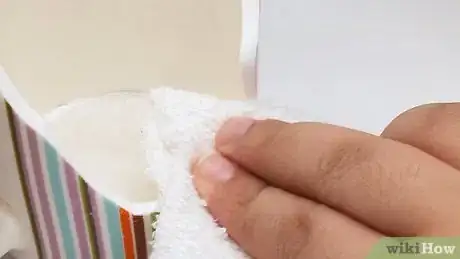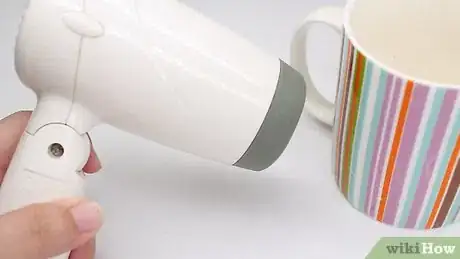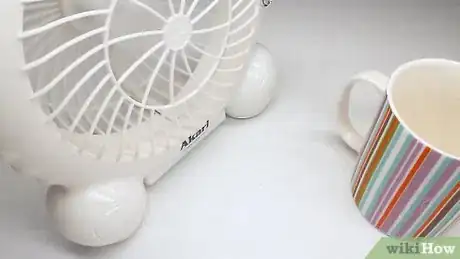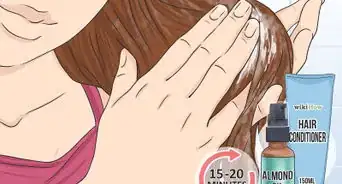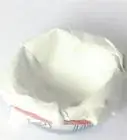This article was co-authored by Amy Guerrero. Amy Guerrero is an Arts and Crafts Specialist and the Owner of Sunshine Craft Co., a crafting studio based in Phoenix, Arizona. Amy specializes in macrame, DIY crafting, and teaching fiber arts. She offers monthly in-person and online workshops along with having developed a range of DIY craft kits for at-home projects. Amy holds a BS in Industrial Design from Philadelphia University. She worked as a graphic designer before starting her own business. Sunshine Craft Co. is a creative hub that offers a wide range of workshops, tools, and resources for any craft project to inspire creativity and community engagement.
This article has been viewed 125,397 times.
As anyone who has ever had their fingers bonded together with super glue can attest, it is not the easiest substance to remove. Though super glue is a fast-drying and strong adhesive, you may want it to dry faster. By using the materials properly, you can greatly speed up the drying process. Keep everything you need within reach, because it doesn’t take long for super glue to set!
Steps
Binding the Parts Together Correctly
-
1Clean the surfaces you wish to glue together with a damp cloth. Dirty surfaces can prevent proper binding, so you’ll want to remove any dust, oil, paint, or other dirt before applying your glue. Thoroughly wipe the surfaces and be sure to allow them to dry. [1]
- Super glue works best on porous materials, and may not work well on smooth surfaces such as glass.
-
2Apply a thin layer of super glue to the surface you want to attach to another. To ensure a quick and clean drying process, make sure that the surfaces are mated together as best as possible. This means using enough glue to connect the parts without leaving too much space between them. The glue forms the strongest bond when there is little to no gap between the parts, and should not act as a filler. The general rule is about one drop per square inch.[2]
- Be sure to keep some acetone nearby in case you get glue on your hands or an unwanted surface and need to remove it!
Advertisement -
3Connect and hold the parts together while the glue sets. After applying a thin layer of glue on the surface, you will then want to attach it to the other surface to create a long-lasting bond. A tight and secure attachment will ensure a strong connection and will speed up the drying process. You can clamp the surfaces together to create a tighter seal and to hold the parts together as the glue dries. [3]
- The glue will hold after a few minutes, but will take about 24 hours to fully set.
Speeding up the Drying Process
-
1Use a hairdryer on a low setting to heat the glue and cause it to set quicker. Super glue is very sensitive to temperature. A little bit of warm air can go a long way and speed up the time it takes the glue to set. Be sure to move the hairdryer around so as not to overheat an area.[4]
- A naturally warm environment will also speed up the drying process. That’s why the super glue bottle says to store in a cool place!
-
2Increase the room’s circulation and airflow to dry the glue quicker. To increase the airflow around your drying glue, you can use simple devices like a fan or an open window to increase the circulation in the room. It is also a good practice to have good circulation and ventilation when working with chemicals like super glue as overexposure can lead to nausea, headache, and other negative health effects. [5]
- You can also use your breath to apply airflow!
-
3Add baking soda to the glue to make it dry faster. Baking soda can act as what is called an “accelerator” and reduce the time it takes for the glue to set.[6] After you apply the super glue, sprinkle a little bit of baking soda and the glue will set almost instantaneously.[7]
- Be careful when adding baking soda as it will cause the glue to heat up.
- There are also chemical accelerators that you can find at your local hardware store that will cause the super glue to set quicker.
Warnings
- Be sure to work in a well ventilated area as super glue may contain toxic fumes.⧼thumbs_response⧽
References
- ↑ https://scottiestech.info/2016/07/10/superglue-everything-you-need-to-know-and-some-things-you-dont/
- ↑ https://www.youtube.com/watch?v=VZqf5rOJNCE
- ↑ https://www.youtube.com/watch?v=VZqf5rOJNCE
- ↑ http://mentalfloss.com/article/71303/15-things-you-didnt-know-your-hair-dryer-could-do
- ↑ https://www.explainthatstuff.com/adhesives.html
- ↑ https://www.youtube.com/watch?v=0aOUaHaxGc0
- ↑ https://www.popularmechanics.com/science/tips/a584/2569841/
